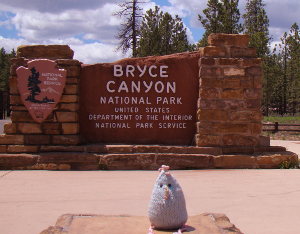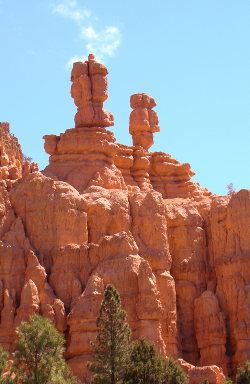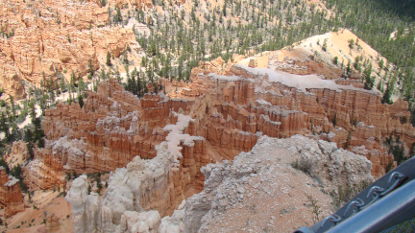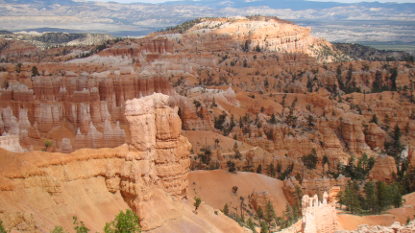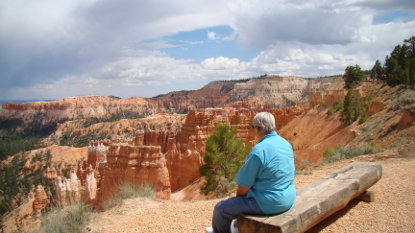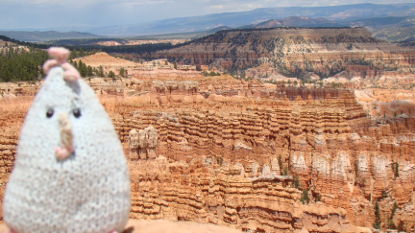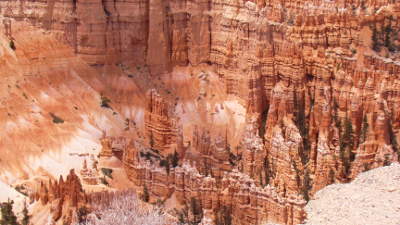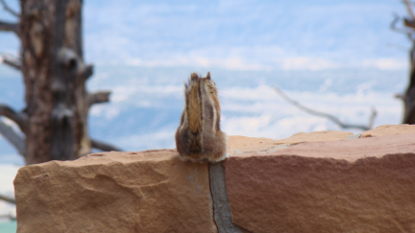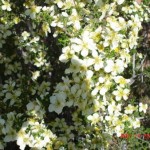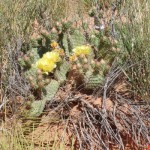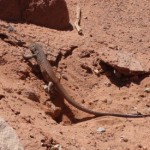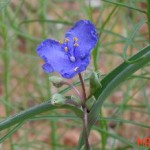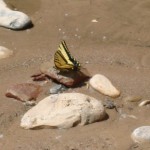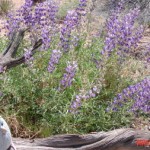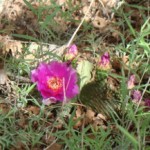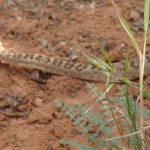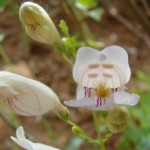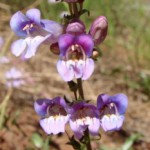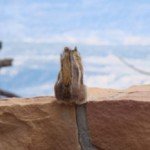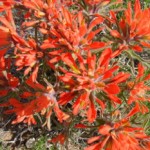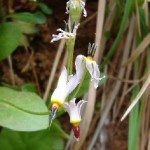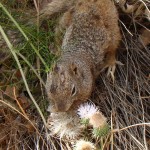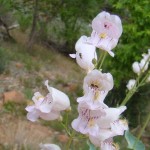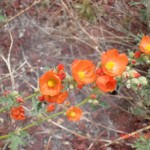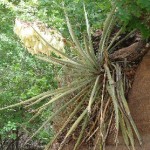
Chicken at the entrance of Zion National Park
Zion is the first and if I am not mistaken the largest National Park in Utah. It obtained its National Park status in 1919.  It offers magnificent views of the canyon carved by the Virgin River. It is home for more than 285 species of birds and 800 native species of plants. We were lucky enough to visit it while the Columbines and Monkey flowers were in full bloom.

Columbine close-up

Columbine hanging growing right out of the rock
And the Monkey flowers were trying to steal the show!
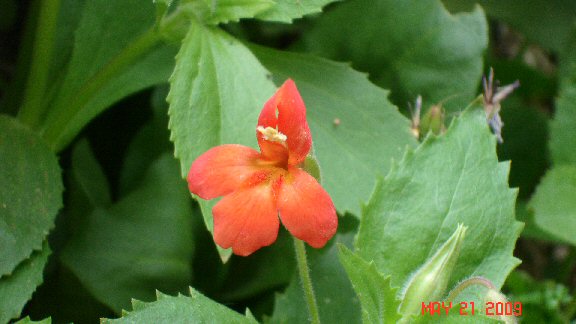
Monkey Flower close-up
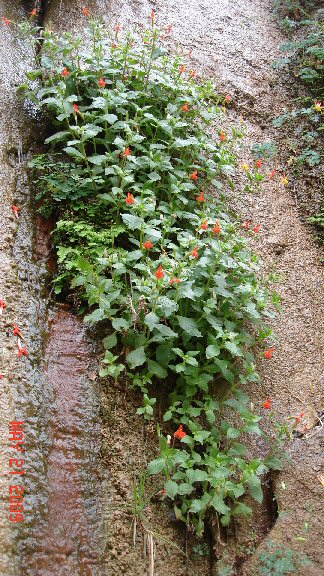
Monkey Flowers hanging on a rock
A bit more shy and hiding was the Sego Lilly

Sego Lilly
Amongst the features of Zion, the hanging gardens are probably the most amazing. Water from rainfalls is easily absorbed by the porous rock, it makes its way down and finally finds a way out, through cracks. It takes a long time for the water to travel through the rock,  tests on some of the water coming out proved it to be thousands of years old. In turn, the water feeds a variety of plant and animal life like the tiny Zion Snail, only found here (it is the size of a pen point).
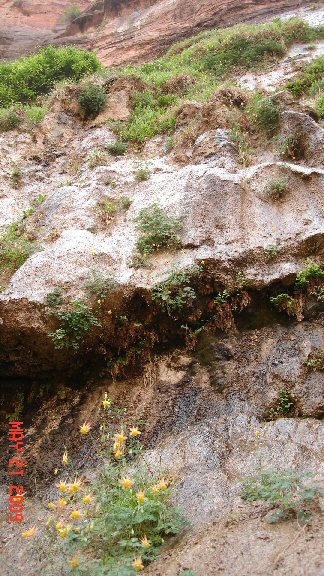
Hanging Garden
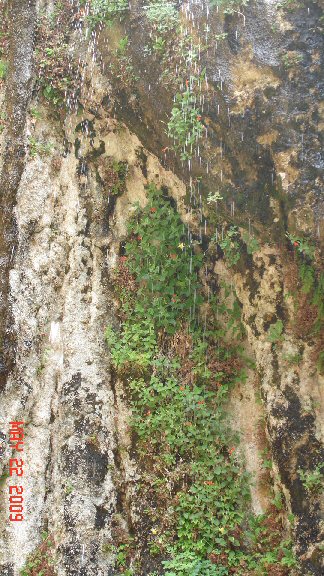
Permanent rain fall from a weeping rock
And then there is the Virgin River and the awe-inspiring views along its shores.
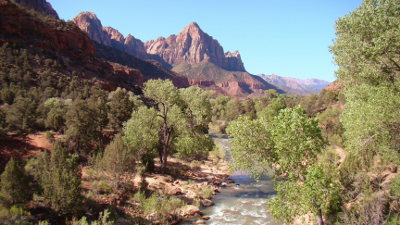
View of the Virgin River
Chicken had a lot of fun and new experiences in Zion, he made a new friend,
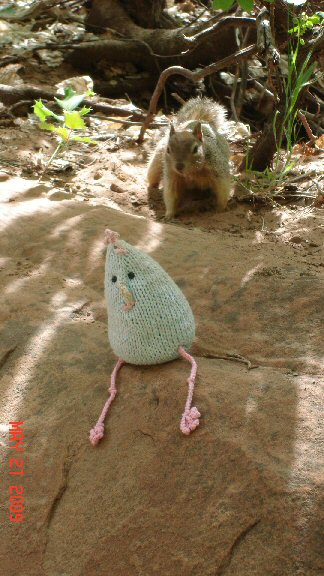
Chicken and his new friend
and he pretended to be very courageous by standing on a rock in the middle of the river
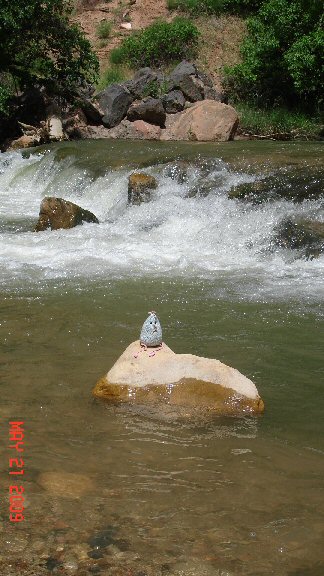
No chicken got their feet wet for this picture, we can't say the same about the photographer;)

I wonder why Bear calls me a "tree hugger" ?
An then, there are the trails. Zion offers trails for every skill level. Since our skill level is as I said before, basic, we only walked the easy trails. The most famous and popular one however, is a challenging and strenuous 5 to 8 miles trail called Angel’s Landing, with an ascent of about 1488 ft,  part of it is only 28 inches wide with a drop of 800 feet on one side and 1200 feet on the other. They do say that they installed chains to help along the way, but we did NOT attempt to walk this one! We did however, take pictures of people, 1200 feet up, walking the narrow trail. Bear nicknamed them “The Fools”. So here is a picture of Angel’s landing from the ground.
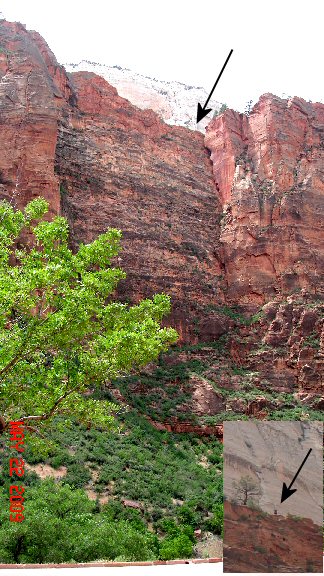
Angel's landing trail narrow part views from 1200 feet below. See "The Fools" on top?
and here is a picture of “The Fools” taken with a 15X zoom
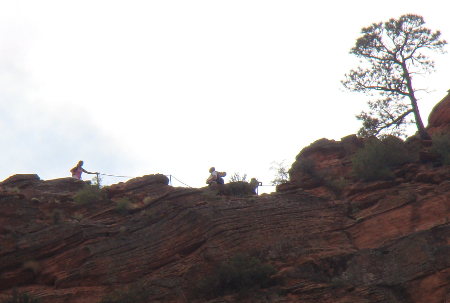
"The Fools"
I have so many pictures of different parts of Zion, just too many to show them all on the blog, but here are a few more pics for your enjoyment.
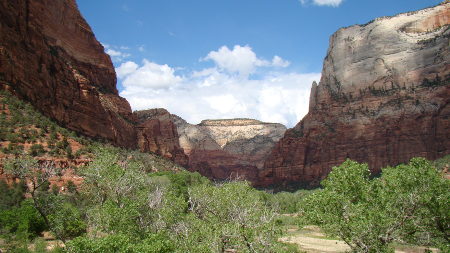
The color of the rock formations varies from deep red to almost white.
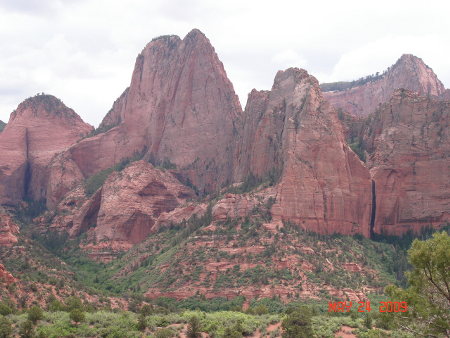
In the Kolob area of the Park, we get totally different views
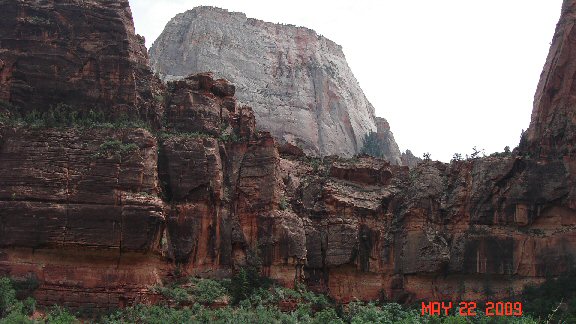
Here is a good example of the different rock colors
Finally, we took US 9 through the park, drove through the tunnel which was built in 1930 and measure 1.1 miles long (quite a piece of engineering for that time!) and on the other side, there was another world, totally different but equally surprising.

Zion tunnel, completed in 1930

Checkerboard Mesa
A chance enounter:
Big Horn Sheep are hard to see, we heard of people living around here for 25 years who never had the chance to see one, but WE DID!
On our way back from Bryce Canyon, right after we went through the Zion tunnel, Â there they were, 2 on the road and a few in the ditch, we couldn’t really stop, there was no place to do so, but I quickly snapped this picture:
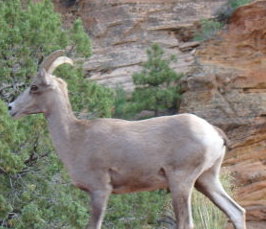
Big Horn Sheep
And then we also saw a rattle snake (believe me, that’s not easy to spot!)

Rattle snake
Of all the Parks we visited so far, I must admit I have a sweet spot for Zion, it tops my list of favorites.
Average Rating: 4.5 out of 5 based on 192 user reviews.
